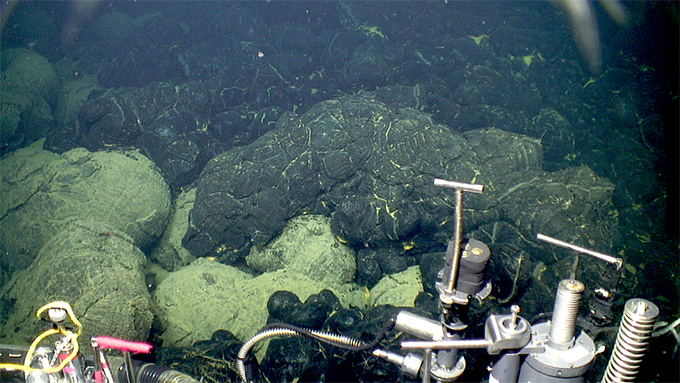An underwater volcano is likely to erupt somewhere in 2025.
This very preliminary announcement is a big deal because the prediction of explosions more than hours ahead is “quite unique,” says geophysicist William Chadwick. But 470 kilometers from the coast of Oregon and over a kilometer below the waves, a volcano known as a shaft seamout of all boxes that hints at the nearby activity, Chadwick and his colleagues reported December 10 at a US geophysical union meeting In Washington, DC
For the previous decade, a set of devices have monitored each Axial-Italing, swinging, swelling, slope and real-time data distribution through a seafood. “It is” the most well-interested submarine volcano on the planet, “says Mark Zumberge, a geophysicist at the Scripps Oceanography Institution in La Jolla, Calif., Who was not involved in work.
But in November, a special milestone captured Chadwick’s eye: the axial surface was balloon at nearly the same height as it had before its last explosion in 2015 – lucky, just months after the monitoring began. Balooning is a sign that magma has accumulated underground and is building pressure.
The 2015 Ellingance allowed Chadwick, of the Oregon State University’s Naval Science Center in Newport, and his colleagues to foresee this year’s explosion – “our best success of prediction,” he says. The last ellinging, along with the increase in seismic activity showing the motion magma, has made researchers narrow to another.
The wider team of axial researchers also has a new tool to evaluate the explosion of the Magma Day that will remove things. And other researchers recently used artificial intelligence to dig into earthquake records that preceded the explosion of 2015 and identified exactly which models should see hours in front of another. “Will this predecessor of the earthquake work?” Ask Chadwick.

If it happens, it will be a day on the ground for volcanologists like Rebecca Carey (Sn: 1/25/18). The discovery of early warning signals offers “the exciting opportunity to place remote -operated vehicles to capture the explosion that is happening,” says Carey, from the University of Tasmania in Sandy Bay, Australia. In addition to volcanic statements, she says, capturing the explosion in the act would provide a brief appearance of its effects on hydrothermal systems and nearby biological communities.
For human communities, volcanoes on earth generally pose a greater risk than those under water (Sn: 9/2/22). But there are exceptions. For example, Hunga Tonga 2022 explosion in the South Pacific Ocean caused a tsunami that caused estimated $ 90m damage (Sn: 1/21/22). In general, Chadwick says, “Forecasting is difficult”. A discouraging of the experimental land forecast is the risk of false alarms, which can cause unnecessary evacuations and future disbelief. In the axial, he says, “We don’t have to worry about it.”
Forecasting is only possible thanks to the extensive monitoring data and knowledge of how a specific volcano behaves. “There is no crystal ball,” says Valerio Acocella, a volcanologist at Roma University in Rome. On the contrary, forecasts are based on the reception that when the activity of a volcano reaches a threshold that previously reached, it can explode.
Geophysical Michael Poland of the US Geological Survey Volcano Observatory in Vancouver, Wash. Because most of today’s efforts rely on the recognition of models, he says, “there is always a risk that a volcano will follow a model we have not seen before and do something unexpected.” Both Poland and Acocella hope that forecasts will evolve to be based on the physics and chemistry of magma systems that support a volcano.
Until then, scientists will learn what they can from any success. And the axis is a good place to try, says Arocella. There are relatively frequent explosions, and each of them is an opportunity to try ideas. This regular behavior makes the axis “a very promising volcano,” he says. “We need these ideal cases to understand how volcanoes work.”
Everything that happens in 2025 will not change the world of prediction of the explosion. But Arocella says, “We will understand it better, and that will help us understand other volcanoes.”
#Scientists #anticipate #eruption #underwater #volcano #Oregon
Image Source : www.sciencenews.org